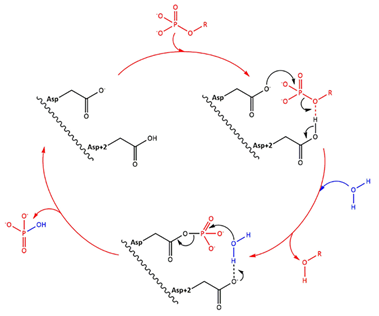Sandbox Reserved 1480
From Proteopedia
(Difference between revisions)
| Line 25: | Line 25: | ||
== Relevance == | == Relevance == | ||
| + | Liver cancer is the second leading cause of cancer causing the most deaths. Hepatocellular carcinoma (HCC) represents approximately 90% of primary liver cancer cases. In order to finally find a solution to this disease that is ravaging thousands of people, the discovery of the role of the LHPP protein as a suppressor tumor is essential to hopefully cure liver cancer patients by turning off the uncontrolled growth of cells. | ||
| + | |||
| + | Moreover, the mode of action of the protein could also be relevant for other cancers types. | ||
== Structural highlights == | == Structural highlights == | ||
Revision as of 19:29, 7 January 2019
| This Sandbox is Reserved from 06/12/2018, through 30/06/2019 for use in the course "Structural Biology" taught by Bruno Kieffer at the University of Strasbourg, ESBS. This reservation includes Sandbox Reserved 1480 through Sandbox Reserved 1543. |
To get started:
More help: Help:Editing |
Structure of the protein LHPP
| |||||||||||
References
"Molecular cloning of a cDNA for the human phospholysine phosphohistidine inorganic pyrophosphate phosphatase." Yokoi F., Hiraishi H., Izuhara K. J. Biochem. 133:607-614(2003) [PubMed] [Europe PMC] [Abstract]
"The protein histidine phosphatase LHPP is a tumour suppressor." Sravanth K. Hindupur, Marco Colombi, Stephen R. Fuhs, Matthias S. Matter, Yakir Guri, Kevin Adam, Marion Cornu, Salvatore Piscuoglio, Charlotte K. Y. Ng, Charles Betz, Dritan Liko, Luca Quagliata, Suzette Moes, Paul Jenoe, Luigi M. Terracciano, Markus H. Heim, Tony Hunter & Michael N. Hall. (2018) [PubMed] [Main]

